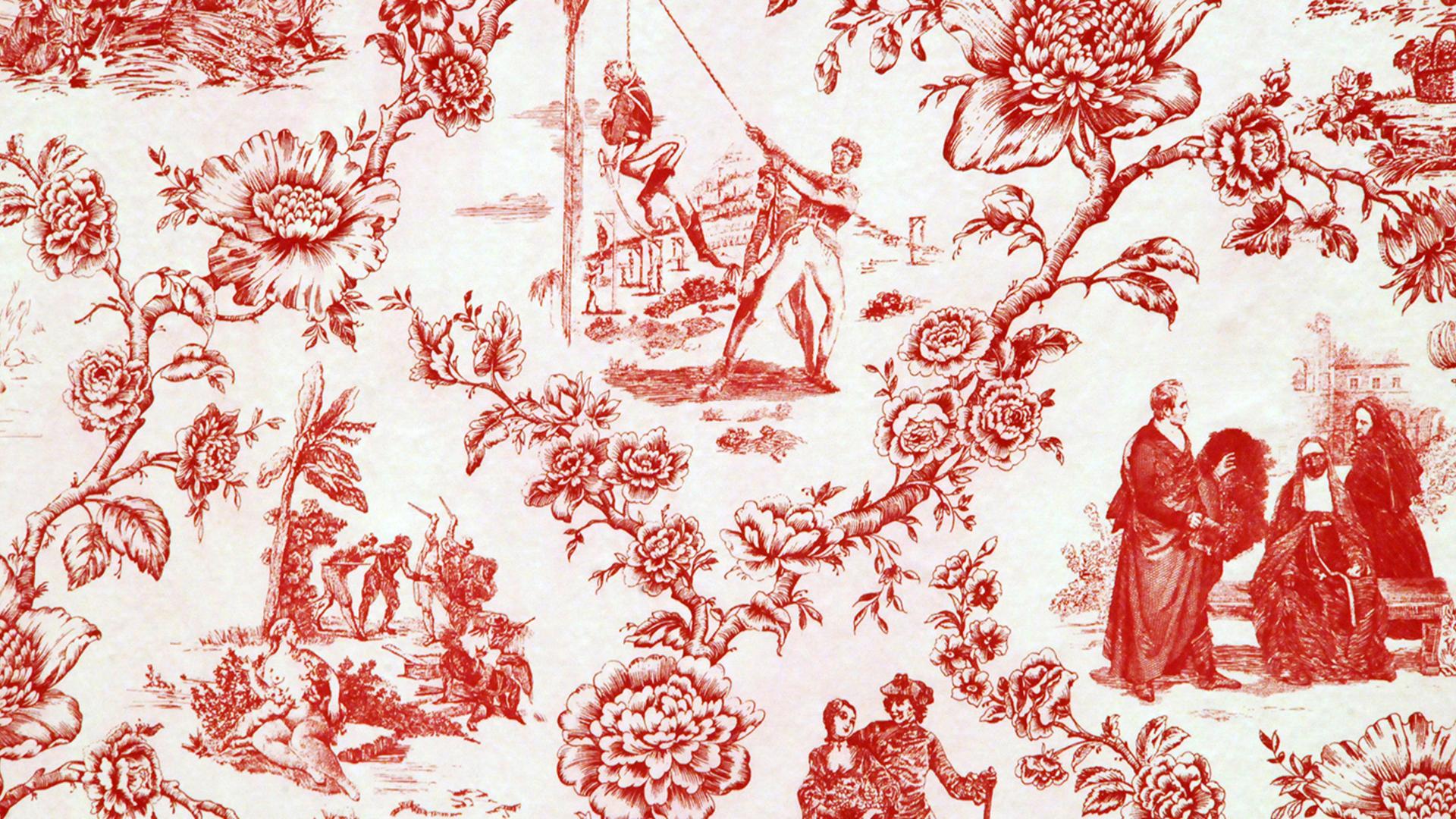
Sourced from a text written by the artist in 1994, Commemorative Toile: Mise-en-Scène delves into the circuitous material history of the trans-atlantic slave trade, focusing on the production of the French decorative fabric known as toile. Sliding between the matrix of colonial expansion and Green’s personal research-driven pursuits beginning in Clisson, France, the artist demystifies the social production that connects the Triangular trade to the seemingly private sphere of the home, while attempting to decipher the contradictory pleasures which might accompany them.
--
Since the early 1990s, Renée Green has become known for multidimensional artworks that chart unseen connections between people, places, and ideas around the globe—from the colonial-era Triangular trade to 20th century student movements. This program brings together a selection of Green’s foundational ’90s projects, all potent explorations of history, memory, and violence. In Mise-en-scène: Commemorative Toile (2020), an essayistic companion to her 1992–93 artwork of the same name, Green looks into the history of the French decorative fabric known as toile and its role in the trans-atlantic slave trade. In Partially Buried (1996) and Partially Buried Continued (1997), she threads together the shifting legacies of Robert Smithson’s earthwork Partially Buried Woodshed (1970), her father’s memories of the Korean War, and differing accounts of South Korea’s pivotal Gwangju Uprising of 1980 to ask “who owns history? Who can represent its complexity?”.
Renée Green is an artist, filmmaker, and writer living and working in New York and Somerville, Massachusetts. Her exhibitions, videos, and films have been seen throughout the world in museums, biennales, and festivals. Solo exhibitions of her work have been mounted at the Carpenter Center for Visual Arts, Harvard University; Yerba Buena Center for the Arts, San Francisco; the Museum of Modern Art, New York; National Maritime Museum, Greenwich; Musée Cantonal des Beaux-Arts, Lausanne; Portikus, Frankfurt; Fundació Antoni Tàpies, Barcelona; Contemporary Arts Center, Cincinnati; Vienna Secession; Stichting de Appel, Amsterdam; Dallas Museum of Art; the Museum of Contemporary Art, Los Angeles; and Jeu de Paume, Paris, among many others. Inevitable Distances, a large-scale retrospective dedicated to Green’s decades-long practice, will be held at the KW Institute of Contemporary Art and daadgalerie in Berlin this fall. Green is also a professor at the Massachusetts Institute of Technology Program of Art, Culture, and Technology at the School of Architecture and Planning.
Presented in partnership with Video Data Bank and the Society for Contemporary Art at the Art Institute of Chicago
- Year2020
- Runtime6 min
- LanguageEnglish
- CountryUnited States
- FilmmakerRenée Green
Sourced from a text written by the artist in 1994, Commemorative Toile: Mise-en-Scène delves into the circuitous material history of the trans-atlantic slave trade, focusing on the production of the French decorative fabric known as toile. Sliding between the matrix of colonial expansion and Green’s personal research-driven pursuits beginning in Clisson, France, the artist demystifies the social production that connects the Triangular trade to the seemingly private sphere of the home, while attempting to decipher the contradictory pleasures which might accompany them.
--
Since the early 1990s, Renée Green has become known for multidimensional artworks that chart unseen connections between people, places, and ideas around the globe—from the colonial-era Triangular trade to 20th century student movements. This program brings together a selection of Green’s foundational ’90s projects, all potent explorations of history, memory, and violence. In Mise-en-scène: Commemorative Toile (2020), an essayistic companion to her 1992–93 artwork of the same name, Green looks into the history of the French decorative fabric known as toile and its role in the trans-atlantic slave trade. In Partially Buried (1996) and Partially Buried Continued (1997), she threads together the shifting legacies of Robert Smithson’s earthwork Partially Buried Woodshed (1970), her father’s memories of the Korean War, and differing accounts of South Korea’s pivotal Gwangju Uprising of 1980 to ask “who owns history? Who can represent its complexity?”.
Renée Green is an artist, filmmaker, and writer living and working in New York and Somerville, Massachusetts. Her exhibitions, videos, and films have been seen throughout the world in museums, biennales, and festivals. Solo exhibitions of her work have been mounted at the Carpenter Center for Visual Arts, Harvard University; Yerba Buena Center for the Arts, San Francisco; the Museum of Modern Art, New York; National Maritime Museum, Greenwich; Musée Cantonal des Beaux-Arts, Lausanne; Portikus, Frankfurt; Fundació Antoni Tàpies, Barcelona; Contemporary Arts Center, Cincinnati; Vienna Secession; Stichting de Appel, Amsterdam; Dallas Museum of Art; the Museum of Contemporary Art, Los Angeles; and Jeu de Paume, Paris, among many others. Inevitable Distances, a large-scale retrospective dedicated to Green’s decades-long practice, will be held at the KW Institute of Contemporary Art and daadgalerie in Berlin this fall. Green is also a professor at the Massachusetts Institute of Technology Program of Art, Culture, and Technology at the School of Architecture and Planning.
Presented in partnership with Video Data Bank and the Society for Contemporary Art at the Art Institute of Chicago
- Year2020
- Runtime6 min
- LanguageEnglish
- CountryUnited States
- FilmmakerRenée Green

